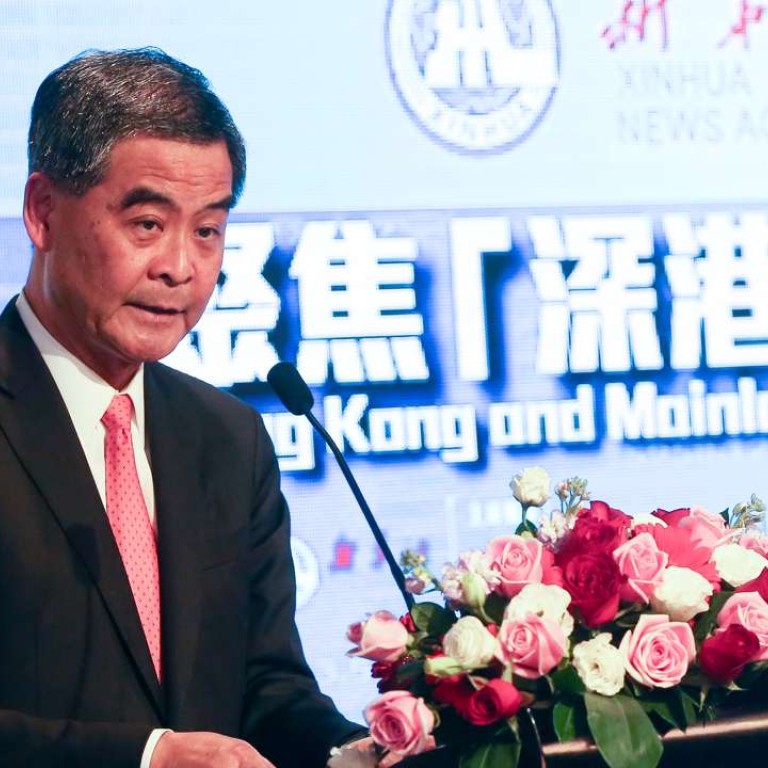
Hong Kong, Shenzhen markets set for bounce from new stock connect though risks remain
Devaluation of yuan and pending interest rate rise in the US remain concerns
Hong Kong and mainland stock market sentiment will get a boost this week after last Friday’s announcement of the launch date for a new cross border trading scheme between Hong Kong and Shenzhen, though any rally isn’t likely to happen until trading kicks off next Monday, say stockbrokers.
However, they warn that devaluation of the yuan and potential interest rate rises in the US would be concerns that could hold the market back from a bull run driven by international investors looking to buy Shenzhen stocks.
Joseph Tong Tang, chairman of Morton Securities, said overall sentiment in the Hong Kong and Shenzhen stock markets should get a boost this week from news that the Shenzhen-Hong Kong Stock Connect programme will launch on December 5.
The programme allows overseas investors to trade 881 stocks on the Shenzhen Stock Exchange, while mainland Chinese brokers gain access to transactions in 417 stocks in Hong Kong, according to a joint announcement by the China Securities Regulatory Commission and the Securities and Futures Commission issued Friday night.
“This is not a big surprise as we all expected the new connect scheme would happen by the end of this year. However, the actual announcement remains good news and should help push markets up in the week ahead,” Tong said.
“But for the market to see substantial movement, it would still need to wait for the launch of the new connect scheme on December 5. The devaluation of the yuan against the US and Hong Kong dollar recently is likely to encourage mainlanders to buy Hong Kong stocks,” he said.
Some Hong Kong blue chips such as HSBC and China Mobile have been rising for a while so some investors may sell next week to take profits
The new leg of stock connect comes two years after the Shanghai-Hong Kong trading link kicked off in November 2014. Tong said the new scheme is more flexible as there is no total quota, while the daily quota for mainlanders to buy Hong Kong stocks has effectively doubled with the additional leg.
The Hong Kong and Shenzhen stock market connect, like the one with Shanghai, has a daily quota of 13 billion yuan for international investors buying A-shares in Shenzhen, while mainlanders can buy up to 10.5 billion yuan per day worth of Hong Kong stocks.
The absence of a total quota for the new connect scheme comes after the 550 billion yuan total quota for the Shanghai and Hong Kong stock connect was removed in August.
Louis Tse Ming-kwong, director of VC Brokerage, also believes the new connect scheme will improve market sentiment but warns of risks over an imminent US interest rate rise.
“There is a high chance the US will increase its interest rate in mid December which would discourage investors,” Tse said. “In addition, some Hong Kong blue chips such as HSBC and China Mobile have been rising for a while so some investors may sell next week to take profits.”
Tse said while the Shanghai Stock Exchange has more traditional large companies such as China Life and Petro China, the Shenzhen exchange focuses on smaller, technology related companies that offer more growth potential, and would be attractive to international investors.
Benny Mau, chairman of the Hong Kong Securities Association, said the new connect scheme would mainly benefit smaller sized stocks listed in Hong Kong and Shenzhen.
“These smaller players may not be constituent stocks of benchmark indexes. As such, it may not help to push the Hang Seng Index or the Shenzhen benchmark index up much higher in the week ahead,” he said.
Mau said the depreciating yuan, which hit an eight year low recently, would discourage international investors from buying A-shares listed in Shenzhen but would see more mainlanders buying Hong Kong stocks via the new connect scheme.

